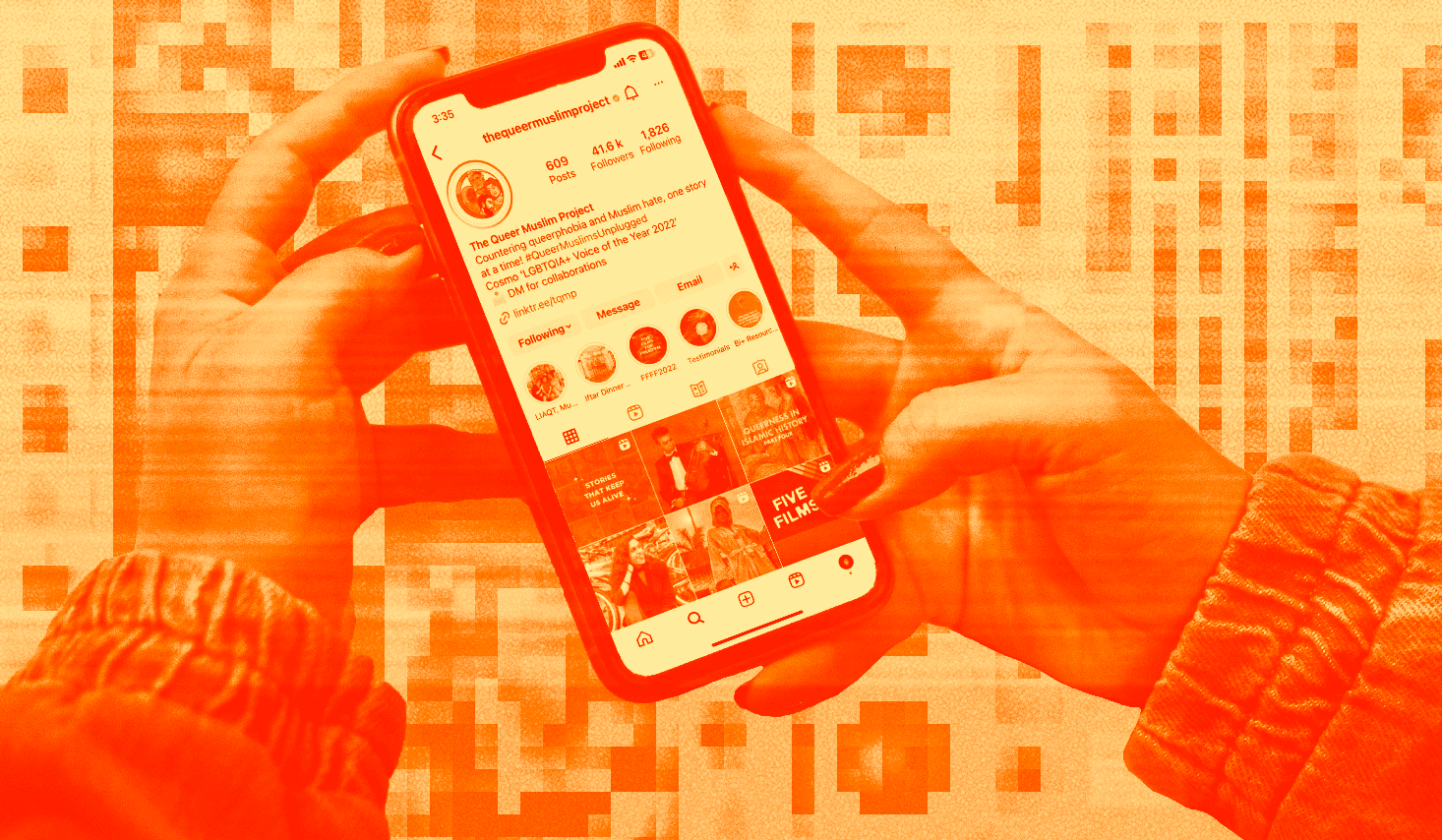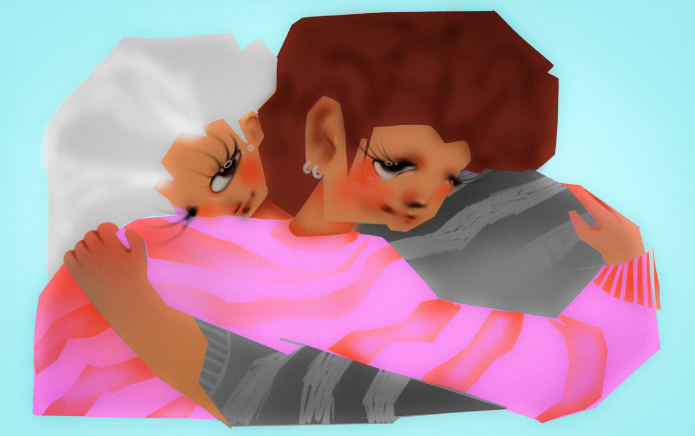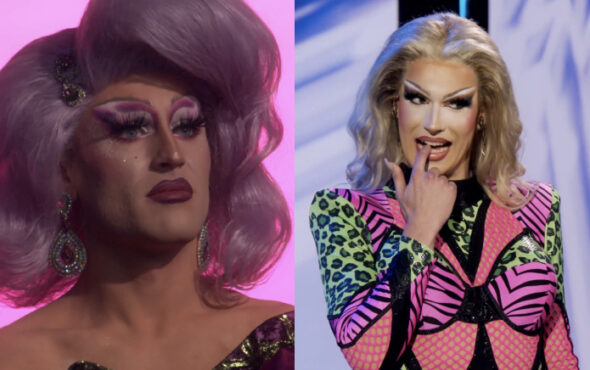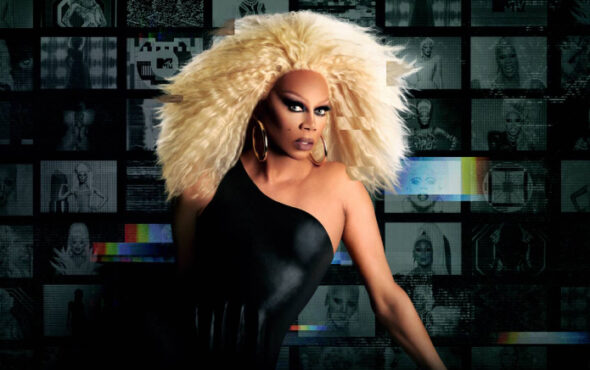
Queer Muslims exist, and their identity is valid. Although this shouldn’t be a controversial statement, rampant homophobia and Islamophobia have made it a necessary one. Searching up hashtags like #lgbtmuslim online highlights how prevalent this hatred is. This is why carving out safe spaces online for queer Muslims is vital.
Whilst statistics on queer Muslims are underreported, over 32% of LGBTQ+ people of faith are not out. Growing up in households where homosexuality is met with shame, means there’s a lot of unlearning to do, which in many queer spaces, isn’t possible. Delatolla notes the inclusion of carceral bodies like the Home Office and the Police in Pride Events, organizations that have notoriously been threats to Black and Brown minorities. “We expect that visibility means constantly having to put yourself out there…that becomes problematic when you’re dealing with the state,” Dr. Andrew Delatolla, a lecturer in Middle Eastern Studies at the University of Leeds explains.
“It’s interesting because the LGBTQ+ community often tends to dismiss the experience of diaspora groups who have had a different kind of upbringing,” “When those experiences are dismissed, it leads to an exclusion that is built on these microaggressions.” It’s true, for queer Muslims, backlash exists both within their own religious community and from LGBTQ+ spaces.
Over the past few years, queer Muslim Instagram accounts like The Queer Muslim Project and the Queer Muslim Resistance have been popping up online, allowing queer Muslims to share their stories without fear of judgement or harassment. The Queer Muslim Network is one of those many accounts.
What started out as a way for Summeiya, a 23-year-old from Toronto who runs the account, to bring together queer Muslims within the Greater Toronto Area turned into a global community. They’ve hosted virtual mixers, partnered with the Toronto International Film Festival and run Iftar Drives to help queer and transgender Muslim people who are spending Ramadan in isolation. “Because we are all different and because we are all pushed out of the mainstream conversation, there’s a lot more open-mindedness towards the different ways of being Muslim.” For a community that is under constant scrutiny, whether it be proving their religiousness or their queerness, these judgement-free spaces are necessary.
“How much do you have to give of yourself to prove you belong?” Dr. Delatolla asks. “That experience does a lot to an individual, particularly to someone who’s questioning their sexuality.” Many of the people who are exploring their queerness online might not feel comfortable publicly displaying their identity, but that shouldn’t make them feel even more alienated. Violence against Muslims and against queer people are at an all-time high. It’s important to remember that coming out is not always safe for folk This is particularly the case in Canada, where Islamophobic and homophobic hate crimes have increased since the pandemic.
Summeiya explains how important facilitating safety measures are in the work they do – many of their members aren’t out, so it’s important for them to feel as comfortable as possible engaging in Queer Muslim Network’s content. Asad, 25, another content creator based in London, reiterates this. In his day job, he provides free HIV and STI testing to various minority groups.
“These people don’t visit sexual health clinics for a range of reasons, including shame, stigma.” His presence as a queer Muslim helps those who have often been excluded from these conversations feel seen. “I’m able to bridge that gap and provide a safe space for the community to feel empowered when it comes to their sexual health and their identity.” Online, these messages are amplified.
View this post on Instagram
For queer Muslims, visibility is just getting started. There’s been progress, with trans actor and musician Dua Saleh appearing on Sex Education and the recent inauguration of Muslim Pride. However, being that visible comes with a lot of responsibility.
Shaz, 24, grew up in India but moved to the UK in her teens is another content creator who has been sharing her experience as a queer person in a world where she couldn’t find any representation. “I was searching left, right, centre,” they explain. “There wasn’t a diverse representation of gay people – it was just white male YouTubers.” Through her Instagram and TikTok, Shaz has been able to share how they navigate their sexuality, their relationship with their partner and instances of queer joy in their life. “Now that I’m kind of out there, I try to open as much and be that voice for other people,” she explains.
Instagram has proven vital for that. “It’s my main source of communication with other people, sometimes people just rant to me and are like “you don’t even have to reply, I just want to get it off my chest.” Shaz receives a lot of DMs from suicidal young teens, who are living at home, closeted and still grappling with their identity.
“It can be overwhelming that I have to stay happy for other people, but I don’t have any consequences posting what I post, so I try to be that representation for someone in the future.” This is also something that Asad reiterates. “I just want to be visible for the younger generation of queer kids to know it’s okay to be different and express yourself outside of heteronormative expectations.”
Maintaining positivity is a hard task, one that the admins of these accounts have learned to master as a means of survival. Shaz began receiving death threats when they started being explicit about their queerness. “That’s when I started to post about it even more because it would genuinely piss people off.” It seems like a brave response, but for Shaz, it was inevitable. “When you spend so much time hating yourself, you kind of have to get over it at a certain point.” Asad is also very aware of how vital his content is helping young queer people. “I can shrug off the hate. My existence is activism and if that angers people, so be it.”
View this post on Instagram
Summeiya shares custody of the Queer Muslim Network account with other admins who all ensure that hateful comments posted on the page are deleted as fast as possible to maintain a safe space. “When you first get access to the account, it can really be triggering, but at this point, I laugh at it, I’ve just seen it for too long.” In order to counter the hate, Summeiya has become their friends’ go-to-person to share positive stories, art or films that uplift queer Muslims. And this is why these accounts are so important for young Muslim teens struggling with their identity. They’re reminders to choose joy every single time.
In some ways, these accounts have become a vital tool for marginalised communities to filter out the negativity that they’re faced with in the outside world. Instead, they’ve created a safe space to explore their identity safely and with empathy.
“All the spaces that I’m in now, I can be myself in,” Summeiya tells me. “It’s a wonderful bubble to be in, like what is the difference between creating a community and creating a bubble?” Being yourself is a privilege, one that these content creators are aware of. In a world that is often hostile towards LGBTQ+ minorities, they choose to handle it with compassion and as a reminder that their visibility is radical.
“I’ve seen that progress,” Summeiya explains. “I didn’t even know that I was planting those seeds by being myself, but I’ve had people come up and thank me.” Their queerness has helped other people in their community destroy the stigma surrounding it. Both Shaz and Asad share these feelings.
Young Muslims are often exposed to queerness with a lot of hostility, and their own exploration of their identity has led to them undoing a lot of internalised shame. This is why these accounts put kindness at their core. “I think young people just need that little bit of time and compassion,” Shaz adds, explaining that a lot of people who used to formerly send them hate messages have come back to Shaz’s account and apologised.
To exist proudly and be kind to others embodies that compassion. Social media has allowed queer Muslims to carve out a space for themselves and display their stories, a reminder that they have always been here and that their identity is valid. “There are so many communities who have been ignored for so long, and we are just now building our roots, so support us, be happy for us,” Summeiya says.



